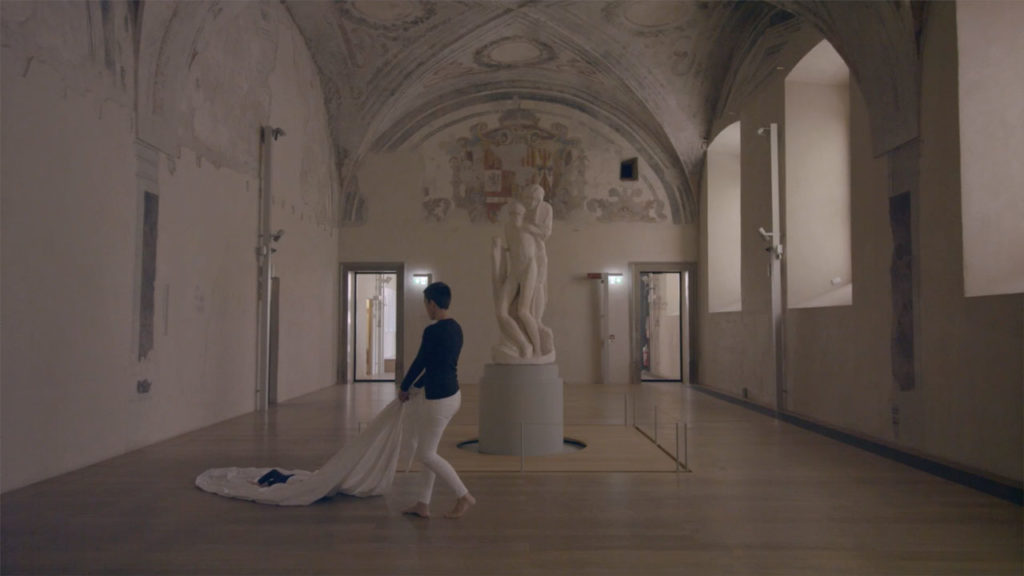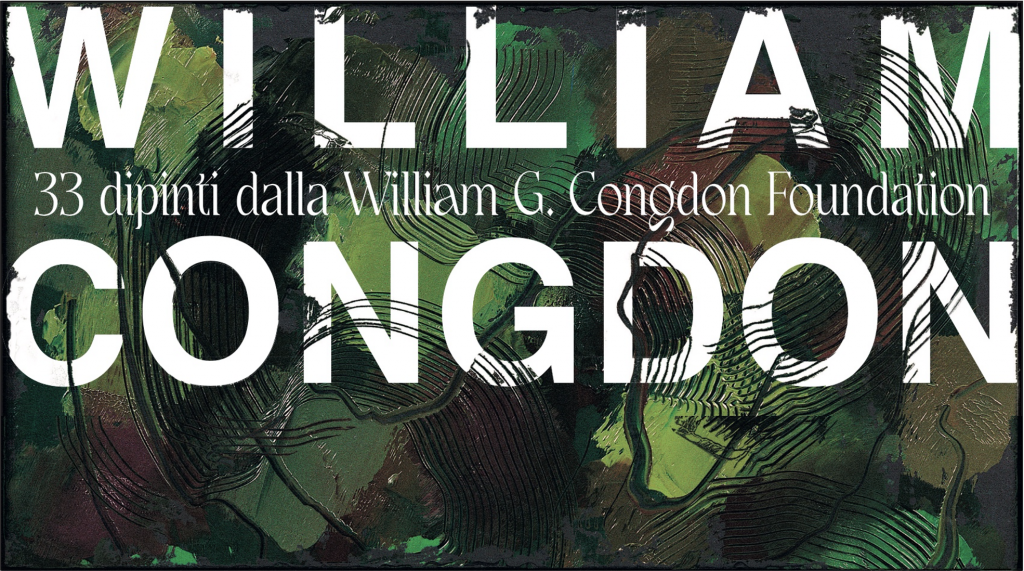Emma Ciceri
A project by Casa Testori
Curated by Gabi Scardi
Produced by Dok Mobile
Castello Sforzesco, Museo della Pietà Rondanini
14 September – 12 October 2021
Casa Testori
9-30 November 2021
On the occasion of Milan Art Week 2021, the Castello Sforzesco Museums, from 14 September to 12 October, presented Nascita Aperta by Emma Ciceri, a Casa Testori project curated by Gabi Scardi.
The work – two videos projected simultaneously – was set up in the restored spaces of the former Spanish Hospital, since 2015 home to the Pietà Rondanini Museum.
Nascita Aperta (Open Birth) is the performance that the artist has created with her daughter in front of Michelangelo’s Pietà Rondanini, the last sculpture he worked on. The daily experience of mother and daughter is that of bodies that, out of necessity, stay close to each other, in many gestures of absolute normality. That daily ritual has been carried and relived by them in long moments spent in front of Michelangelo’s work, where Mother and Son find themselves similarly close in a relationship that binds their bodies into a sculptural unicum.
«We bring our daily experience of visiting the body of a work: Michelangelo’s Pietà Rondanini. – explains Emma Ciceri – We spent time with the sculpture, letting the encounter become what it is for our bodies in the home environment: a possibility of research. In the Pietà Rondanini, the embrace between mother and child creates a vital flow that does not allow us to distinguish where life ends and death begins; the sculpture has become a source of questions for us about the relationship between our bodies, and for us, it has become a source of inspiration».
«Nascita Aperta is a self-portrait and, at the same time, a metaphor for a relationship in which two lives are inextricably linked», explains the curator Gabi Scardi. «It is also a declaration of adherence to life and form, not for what it must be, but for what it is. In insisting on bodies, gestures, on those rituals of contact and care, Emma Ciceri’s images are objective, explicit, yet interior; interior is the time they impose, going beyond all contingency».
«The relationship between mother and daughter, unveiled by Emma Ciceri in the folds of a touching and intimate humanity, is compared with the image of Mother and Son in Michelangelo’s last work», says Giovanna Mori, Curator of the Museo della Pietà. «The artist expresses herself with confident abandon, managing to highlight the extraordinary topicality of a masterpiece that Michelangelo created without any commission, laying bare her soul».
The work, which consists of two videos projected simultaneously, was set up in one of the restored niches of the former Spanish Hospital. «We are very grateful to the management of Castello Sforzesco for making possible both the realisation of this work of great human and emotional value and its presentation in this space adjacent to Michelangelo’s masterpiece, so beloved by Giovanni Testori», said Giuseppe Frangi, vice-president of Casa Testori, the cultural association that supported the production of Emma Ciceri’s videos.
«Having identified a convergence with respect to the Pietà Rondanini, with its figures dramatically fused even beyond the last breath, shows how culture is constitutive of individual and collective memory, and vice versa, experience, even the most cogent, is substantiated through assimilated, incorporated images» concludes Gabi Scardi.




























































